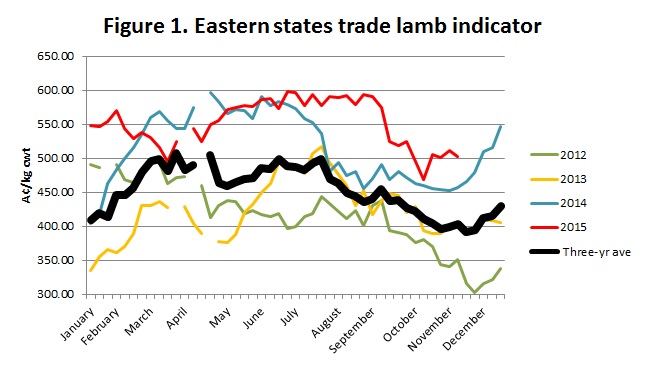Spring lamb prices continue to find new platform
The eastern states trade lamb indicator tends to follow a seasonal pattern of rising sharply during the first two months of the year, before peaking in March and April, then trending to an annual low in November. This is illustrated in Figure 1, through the black three-year average line.

Unsurprisingly, the seasonal low is driven by the larger number of lambs on the market due to the spring lamb flush, while conversely, the price peaks are underpinned by diminishing supplies.
While the stock availability influences the general trend, there is always volatility, influenced largely by rainfall, pasture and water availability and the broader trade environment.
Considering the annual low point is usually in November – exactly where we are right now – of particular interest in recent years, the spring low point keeps getting higher.
During 2012, the Eastern States Trade Lamb Indicator dropped to a low of 303¢/kg cwt, while encouragingly, despite the numbers on the market increasing, the indicator in the 2013 spring low was 86¢/kg cwt above the year before, at 389¢/kg cwt. This trend continued in 2014, with the indicator falling to a low of 452¢/kg cwt (up 60¢/kg cwt from the year before), and again, the higher prices were despite a greater number of lambs on the market.
The trend for 2015-to-date has been slightly different (as a result of heat and rainfall volatility), with the spring low point coming in October rather than November like in the previous three years. Nevertheless, provided there isn’t a dramatic fall in prices in the final six weeks of sales, the low found a new level again in 2015 - 17¢/kg cwt above where 2014 dipped to, at 469¢/kg cwt.
In other words, the seasonally induced low for lamb prices across the eastern states has increased from 303¢/kg cwt in 2012, to 469¢/kg cwt in 2015.
A myriad of factors have led to the progressively rising lamb prices are, including the devaluation of the A$ in the last 18 months, decreased competition from NZ, and the generally growing demand for Australian lamb.



